Did you know that more than 1,300 species are listed as endangered in North America? Continue reading to learn all about the 21 most endangered animals in North America.
Introduction

It’s truly heartbreaking to witness how the homes of these magnificent creatures have been steadily vanishing due to human actions. As a result, many of these animals are now experiencing a drastic decline in their numbers, painting a devastating picture of their uncertain future.
Why are so many Animals Endangered?
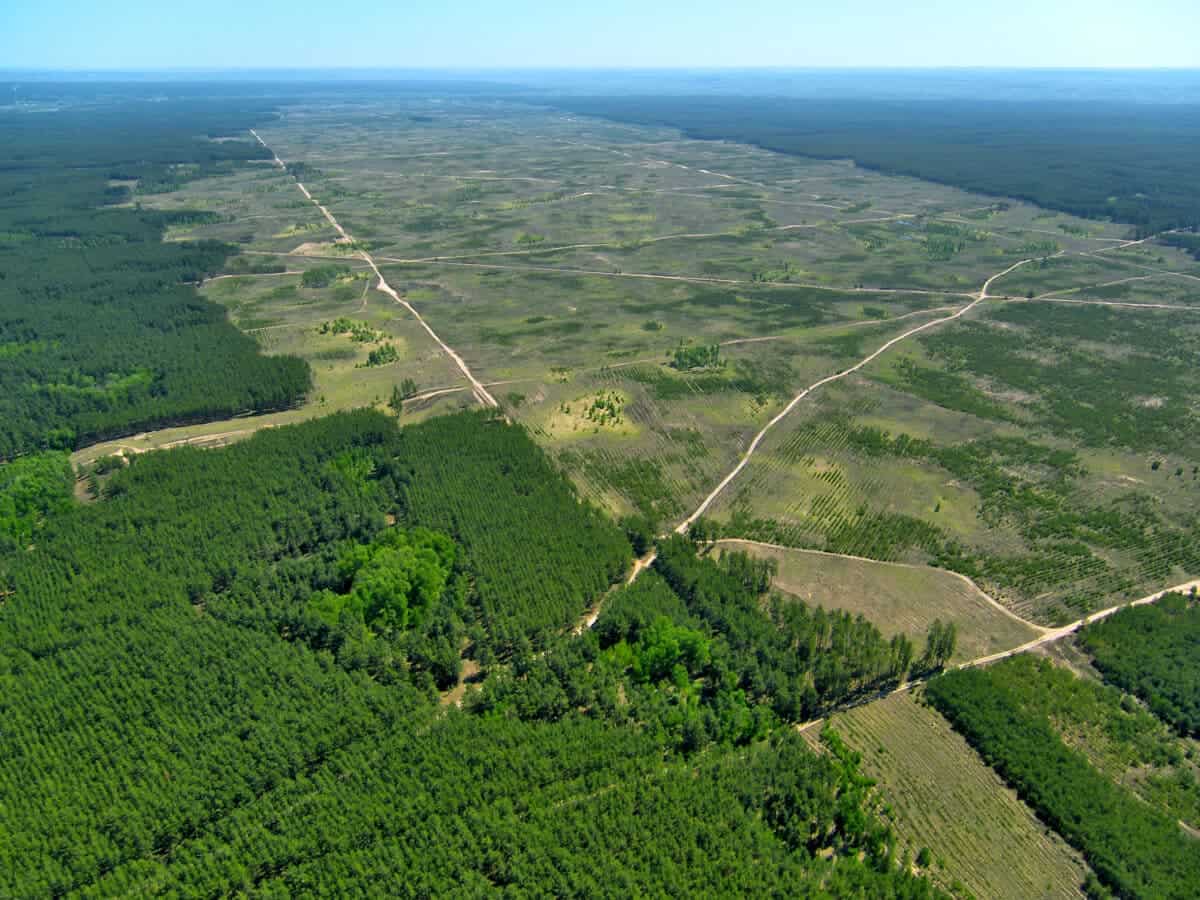
The whole world, including North America, is changing in various ways: climate change, increasing human population, construction of dams, roads, and other projects that require deforestation. With all these changes taking place it is no surprise that nature can’t keep up and it is leading to the loss of diversity all over the globe, not just North America.
The Uncertain Future

If proper measurements are not taken in time by conservationists, environmentalists and – most importantly – governments, we will lose not just our diversity but also many animals that serve crucial roles in natural cycles.
We need to realize that all animals, plants, birds, amphibians, reptiles, and other species are vital parts of this planet and essential for the continuation of life. Fortunately, many people have already realized this, and the mere fact that you are reading this article is a step in the right direction.
#1 Black-footed Ferret (Mustela nigripes)
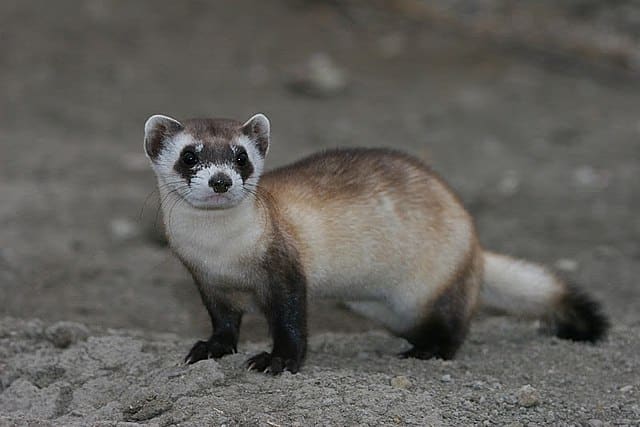
The black-footed ferret is also called the prairie dog hunter or American polecat. It is native to Central North America and appears similar to the Asian steppe polecat and the European polecat.
The black-footed ferret, is facing a serious threat to its survival. Sadly, this adorable creature has been struggling to survive since the 1900s. Its population has been steadily declining, and now it is in danger of disappearing completely.
Reasons for Decline
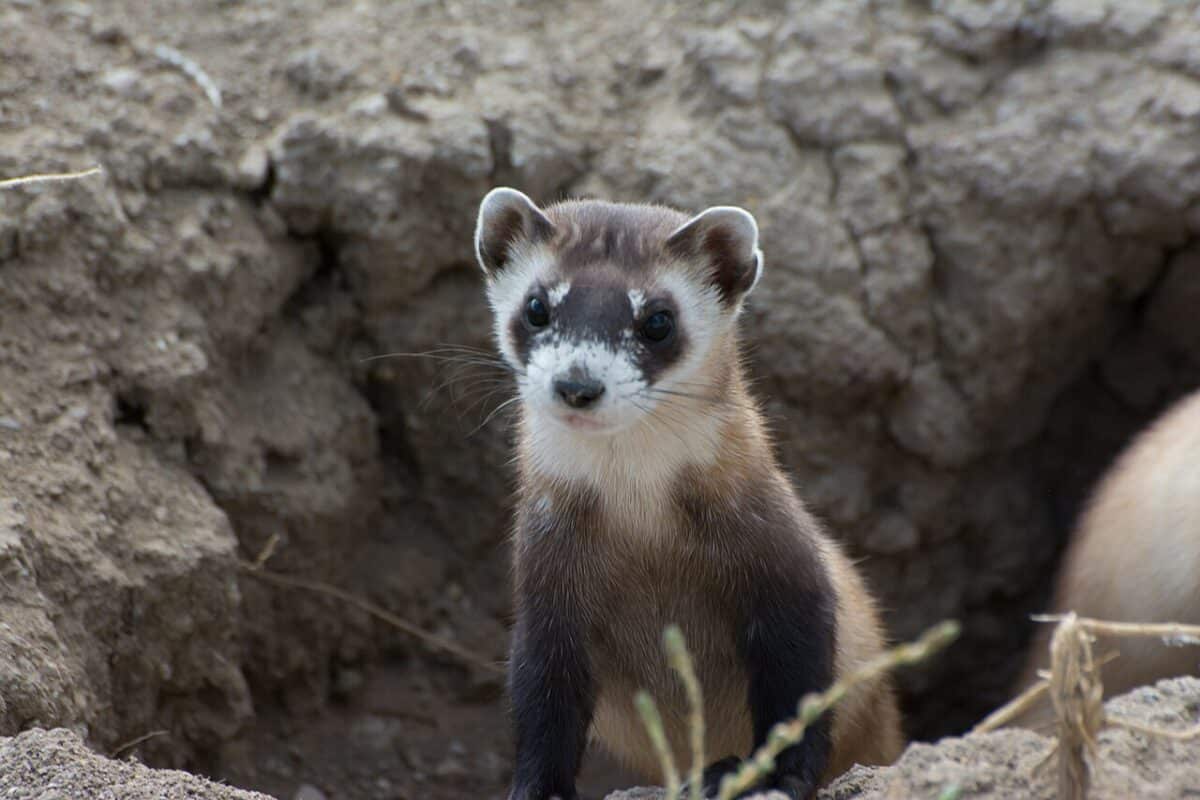
- Human intolerance: They have been subjected to persecution and habitat destruction due to misunderstandings and lack of awareness about their importance in the ecosystem.
- Sylvatic plague: This deadly ailment has had a devastating impact on these animals, making their struggle for survival even more challenging.
- Decline in prairie dog populations: These ferrets rely on prairie dogs for their main source of food and shelter. Unfortunately, diseases have caused a decline in prairie dog populations, leaving the ferrets with limited resources to survive.
- Habitat loss: As human activities continue to encroach upon their natural habitats, the ferrets are left with fewer places to call home. Their survival is at stake as their homes are destroyed or fragmented.
The situation is dire, with only around 300 black-footed ferrets remaining in the entire world. Extraordinary measures must be taken to ensure their protection and prevent them from disappearing forever. We need to raise awareness about the importance of these animals, support conservation efforts, and create safe spaces where they can thrive.
It’s up to us, as responsible stewards of our planet, to take action and preserve the black-footed ferrets for future generations. Together, we can make a difference and give these incredible creatures a fighting chance to survive and thrive once again.
#2 Michoacan Pocket Gopher (Zygogeomys trichopus)

The Michoacan pocket gopher is a rodent species and is native to Mexico. It lives in high-altitude, temperate forests.
Reasons for Decline

The Michoacan pocket gopher is in grave danger of extinction, as recognized by the International Union for Conservation of Nature (IUCN), which has listed it as an endangered animal. This tiny creature is known for its decreasing population, making its conservation efforts a top priority for conservationists. Despite its circumstances, it is important to note that the Michoacan pocket gopher is generally docile and poses no biting threat.
#3 Tehuantepec Jackrabbit (Lepus flavigularis)

The Tehuantepec jackrabbit is a fascinating species that calls Mexico its home. It stands out with its impressive legs and ears, making it one of the largest jackrabbits around. This remarkable creature thrives in grassy dunes and savannas found along the shores of saltwater lagoons.
However, the future of the Tehuantepec jackrabbit hangs in the balance. According to the Mexican Official Norm and the IUCN Red List, it is classified as critically endangered and endangered, respectively. With less than 1,000 individuals remaining, these jackrabbits are now confined to isolated subpopulations.
Reasons for Decline

Several factors pose significant threats to the survival of the Tehuantepec jackrabbit. The loss of suitable habitats due to fragmentation and human activities is a major concern. Additionally, their small population size makes them particularly vulnerable to extinction. Tragically, poaching further exacerbates their decline. The species also faces challenges related to genetic isolation, which hampers their ability to maintain healthy and diverse populations. This makes it vulnerable to predators such as the coyote and gray fox.
The presence of the Tehuantepec jackrabbit in the ecosystem is crucial for maintaining the stability and structure of the communities where it resides.
#4 Gulf Coast Jaguarundi (Herpailurus yagouaroundi)

Gulf Coast jaguarundi is an endangered species from Southern Texas to eastern Mexico. It is smaller than a cougar but larger than an average domestic cat.
The Gulf Coast jaguarundi, an endangered species, faces significant risks primarily due to habitat fragmentation and the loss of its natural territory. The remaining population of this species is uncertain, leading to its inclusion on the IUCN Red List of endangered animals.
Reasons for Decline

The Gulf Coast jaguarundi plays a vital role in terrestrial ecosystems. One of its essential contributions is controlling the population of prey species, which include birds, small mammals, and certain vertebrates. . Additionally, this remarkable species assists in managing agricultural pests by controlling rabbits, rats, and mice, which can cause significant damage to crops.
Preserving the habitat and ensuring the survival of the Gulf Coast jaguarundi is crucial not only for the species itself but also for maintaining the ecological balance of its surroundings. Protecting their natural territories and promoting conservation efforts are key to safeguarding this remarkable creature and the valuable ecological services it provides.
You can discover more of the breathtaking wildlife that the Gulf Coast jaguarundi is a part of by reading our compilation of all the animals in Texas.
#5 Key Deer (Odocoileus virginianus clavium)

The Key deer, a remarkable species inhabiting the Florida Keys, faces critical endangerment and holds the distinction of being one of the smallest North American deer. As a subspecies of the white-tailed deer, it can be easily recognized by its petite size, setting it apart from its larger counterparts.
Reasons for Decline

Tragically, the Key deer is endangered due to a multitude of factors stemming from human activities. Hunting, habitat loss, and car accidents pose significant threats to their survival. Additionally, illegal feeding by humans disrupts their natural behaviors and can lead to negative consequences for their well-being. Diseases and the impact of climate change further exacerbate their plight.
The seriousness of the situation is underscored by the fact that only a mere 700 to 800 Key deer individuals remain in the wild. This alarming population decline has led to their inclusion on the endangered species list. Urgent action is necessary to protect and conserve this unique and vulnerable species.
Efforts must focus on curbing hunting and preventing further habitat loss. Raising awareness about the importance of maintaining a safe distance and refraining from feeding these deer is crucial. Additionally, proactive measures to address diseases and mitigate the effects of climate change are essential to safeguard their future.
By collectively working towards their conservation, we can strive to secure a brighter future for the Key deer, ensuring that this remarkable species continues to grace the Florida Keys for generations to come.
You can start exploring more of Florida’s wildlife by reading another article about it’s unique and majestic birds.
#6 Sierra Nevada Bighorn Sheep (Ovis canadensis sierrae)

The Sierra Nevada bighorn sheep, a subspecies of bighorn sheep, calls the magnificent Sierra Nevada mountains in California its home. These majestic creatures are federally endangered and possess a distinguishing feature: their impressive, large, and curving brown horns.
Reasons for Decline

The decline of the Sierra Nevada bighorn sheep population in North America can be attributed to various factors. Predation by mountain lions, disease outbreaks, and unregulated hunting have all played a role in their endangerment. Virulent diseases have particularly devastated their numbers. In 1970, a devastating reality emerged as only 250 Sierra Nevada bighorn sheep were left.
The official recognition of the Sierra Nevada bighorn sheep as an endangered species came in 2000. As of the 2016 report, a mere 600 individuals are estimated to remain in the wild.
To restore their population to healthier numbers, conservation measures are crucial. These agile creatures require dedicated efforts to protect their habitats, mitigate the threats posed by predators, manage diseases, and regulate hunting. By implementing effective conservation strategies, we can create an environment where the Sierra Nevada bighorn sheep can once again thrive and flourish in their natural mountainous habitats.
#7 Cook Inlet Beluga Whale (Delphinapterus leucas)
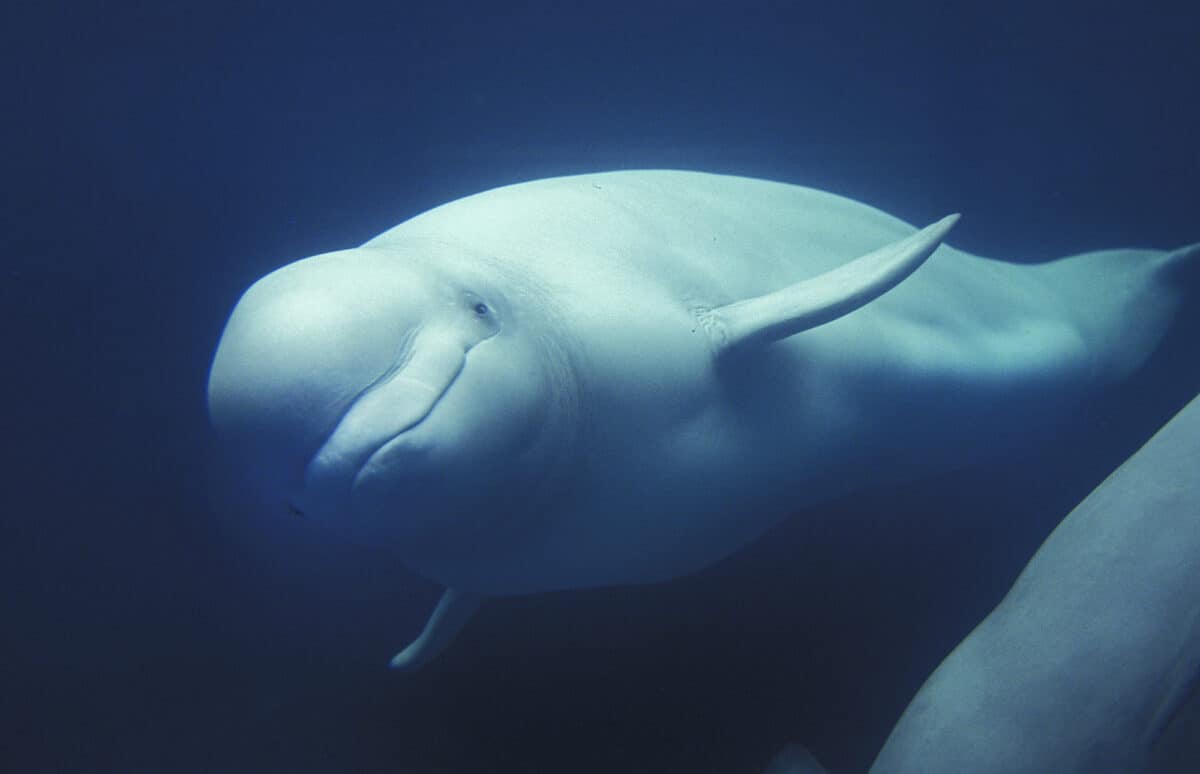
Cook Inlet Beluga whales thrive in the sub-arctic and arctic regions, where icy waters dominate the landscape. However, these magnificent creatures are facing a severe crisis. Since 1979, their numbers have declined by a staggering 80%. According to a 2018 report, a mere 279 Cook Inlet Beluga whales remain, a drastic decrease from their population of 13,000 in the past. This troubling trend of decline has persisted over the last two decades.
Reasons for Decline

As with all endangered whales species the Cook Inlet Beluga whale is confronted with a myriad of threats. Noise pollution, catastrophic events, disease agents, the cumulative effects of multiple stressors, unauthorized take, habitat loss, predation, reduction in prey availability, pollution, and subsistence hunting all contribute to their endangerment.
The recovery of the Cook Inlet Beluga whale is not just important; it is vital to prevent their extinction. Efforts must be made to reduce noise pollution, protect them from catastrophic events, and mitigate the effects of diseases and multiple stressors. Conservation measures should focus on safeguarding their habitats, addressing pollution issues, and ensuring sustainable prey populations. Additionally, respecting regulations regarding unauthorized take and subsistence hunting is crucial for their survival.
By prioritizing the recovery of the Cook Inlet Beluga whale, we can make a significant impact in preserving this iconic species. Together, we can work towards their conservation and secure a future where these majestic whales continue to grace the sub-arctic and arctic waters, thriving in their natural habitat.
You can discover more about the Beluga whale with our complete dive into Beluga Whales.
#8 Florida Panther (Puma concolor couguar)
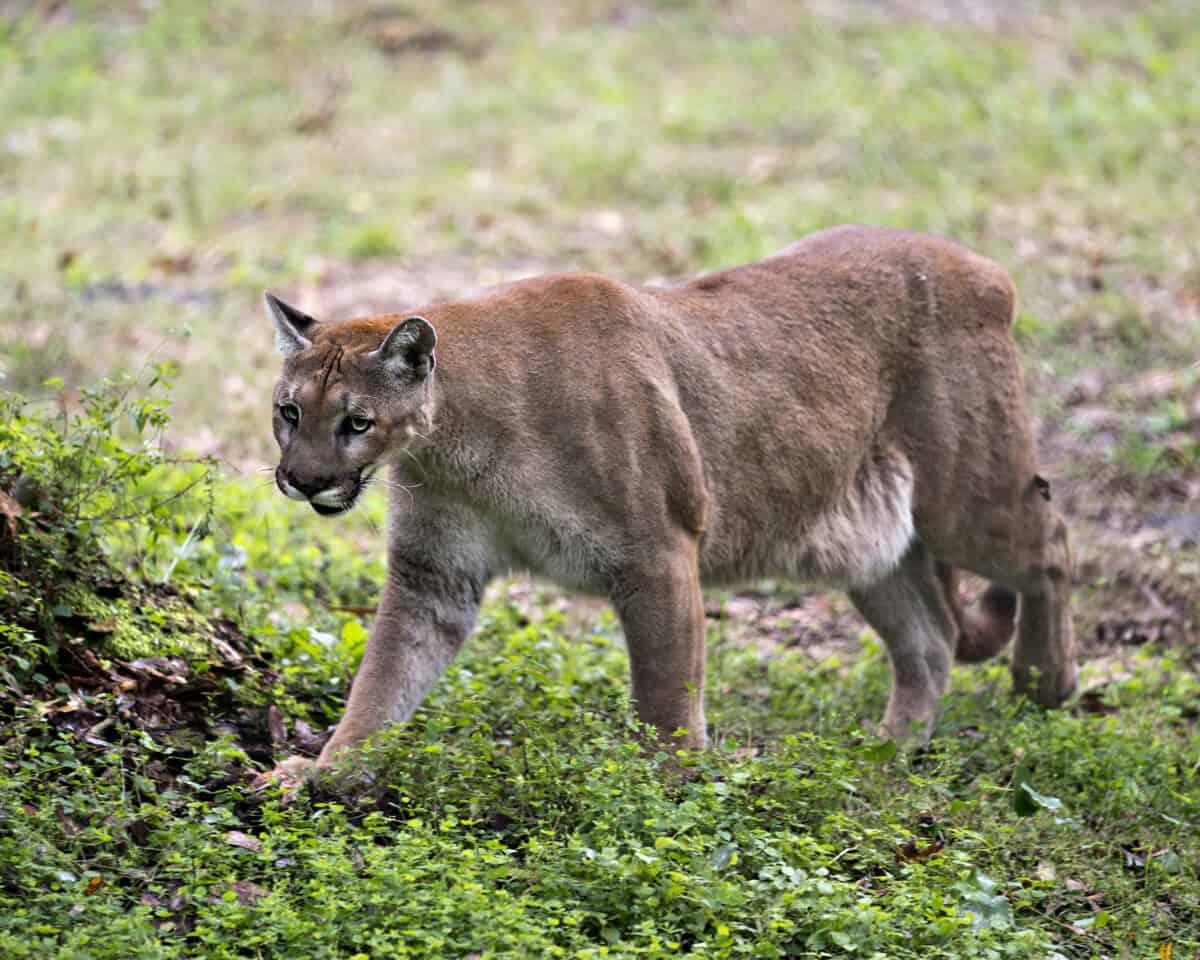
The Florida Panther, also known as the Florida cougar, Costa Rican puma, and Florida puma, is a North American subspecies of the cougar. These majestic felines call tropical hardwood hammocks, pinelands, and mixed freshwater swamp forests their home.
Recognized as the Florida state animal since 1982, the Florida Panther has faced numerous challenges in its conservation journey. In 1970, their population in the wild was alarmingly low, with only 20 individuals remaining. However, according to a 2017 report, their numbers have increased to approximately 230. Despite this progress, the Florida Panther remains an endangered species in North America, necessitating continued conservation efforts.
Reasons for Decline
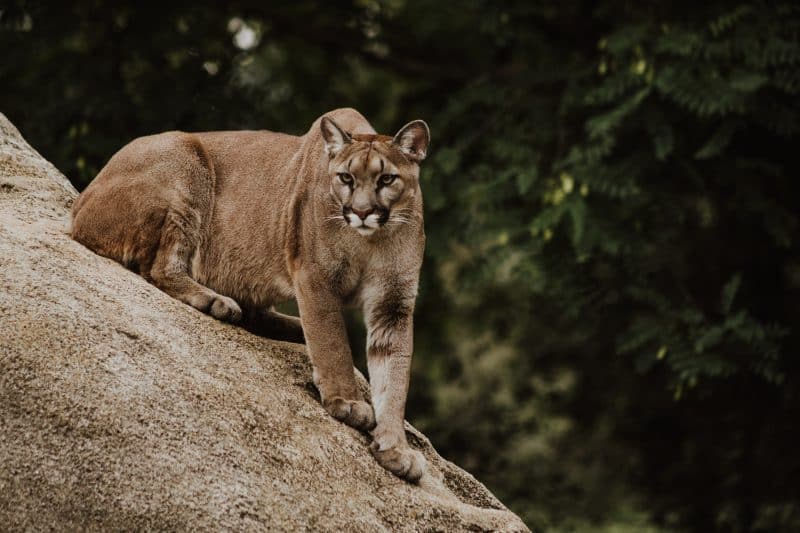
The Florida Panther faces a range of threats that jeopardize its survival. Poaching, habitat fragmentation, predation, habitat loss due to human activities, territorial conflicts, and collisions with vehicles all pose significant risks to their population. The degradation of their habitat and the encroachment of development further exacerbate their struggles. Moreover, mercury poisoning presents a severe threat to these magnificent creatures.
Protecting the Florida Panther requires a comprehensive approach. Anti-poaching measures, habitat conservation and restoration, initiatives to mitigate conflicts with humans and vehicles, and efforts to address mercury pollution are all crucial components of their conservation strategy.
By addressing these threats and implementing effective conservation measures, we can contribute to the recovery and long-term survival of the Florida Panther. Together, we can ensure that this iconic big cat continues to roam the diverse landscapes of Florida, representing the beauty and biodiversity of the region for generations to come.
#9 Mexican Wolf (Canis lupus baileyi)
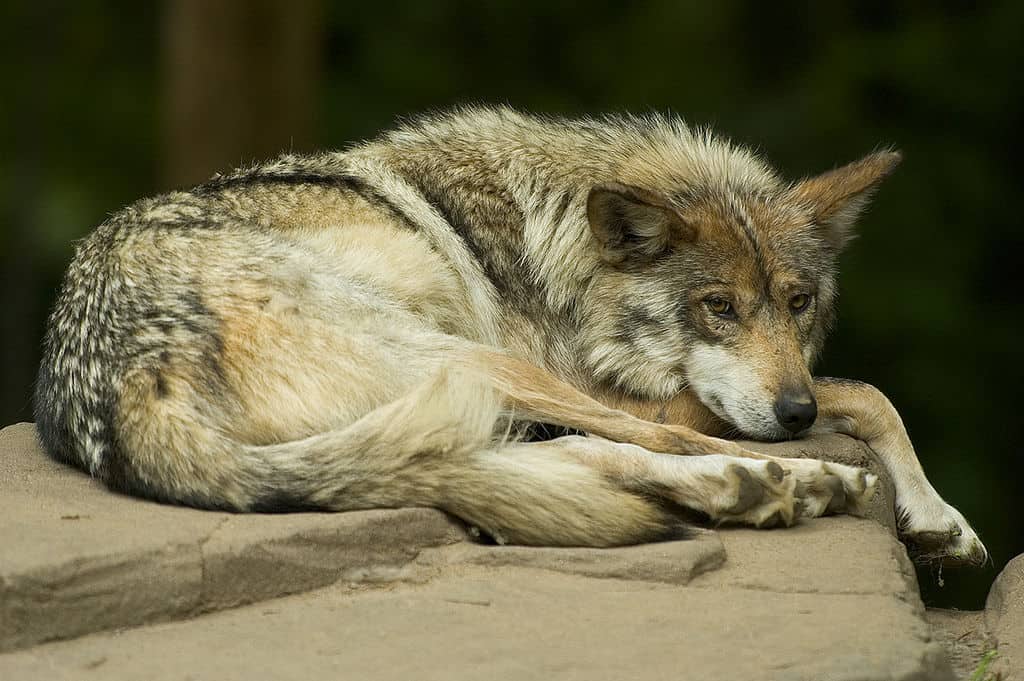
The Mexican wolf, also known as the Lobo(sharing the name with a popular DC comic character), is a subspecies of the gray wolf. It inhabits the regions of southern New Mexico and southeastern Arizona. Notably, the Mexican wolf holds the distinction of being the smallest gray wolf in North America.
As of 2021, the population of Mexican wolves stood at 186 individuals in the wild, while an additional 350 individuals were part of various captive breeding programs. Recognizing the significance of their dwindling numbers, conservationists listed the Mexican wolf as an endangered species under the Endangered Species Act in 1976.
Reasons for Decline
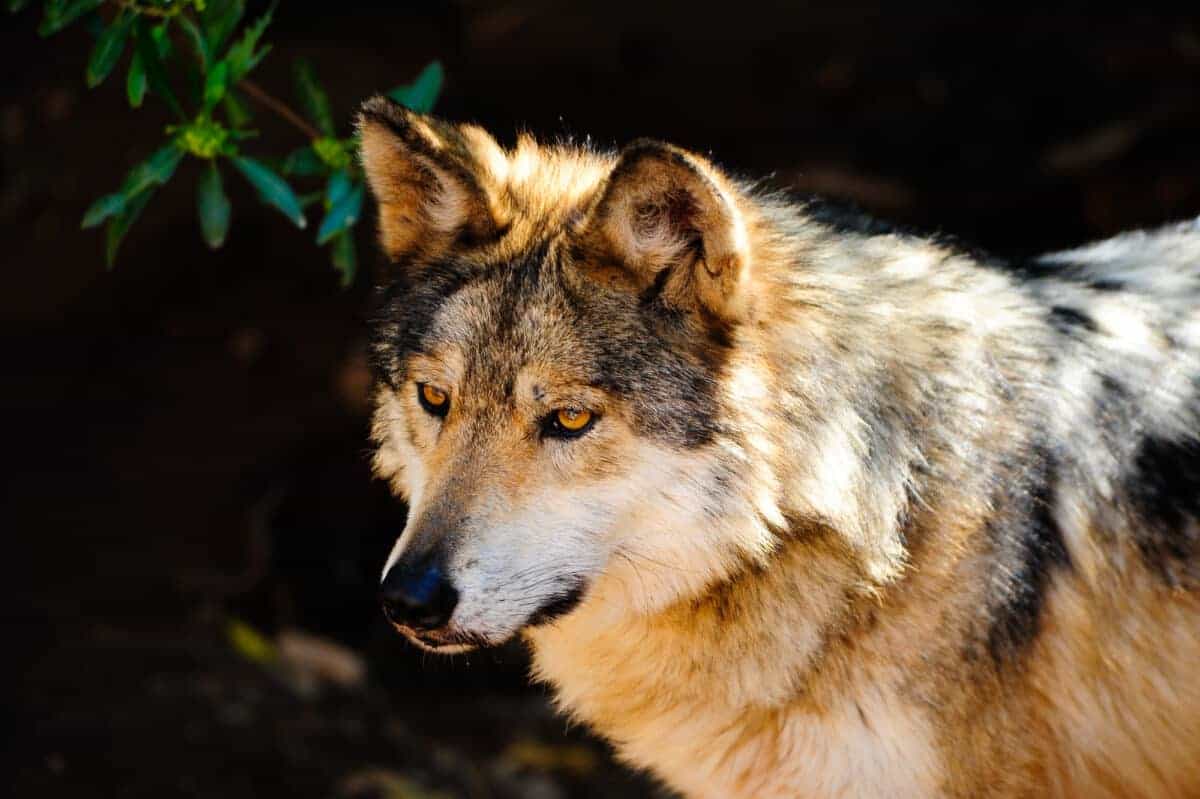
The endangerment of Mexican wolves can be attributed to a range of human activities, including poaching. These magnificent creatures have historically faced persecution through hunting, shooting, and poisoning, which have significantly impacted their population.
Increasing the Mexican wolf population is of utmost importance due to their crucial role in ecosystem restoration. As apex predators, they help maintain a balanced ecosystem by controlling herbivore populations and influencing prey behavior. Their presence is vital for the overall health and diversity of the natural habitats they inhabit.
By prioritizing the conservation and recovery of the Mexican wolf, we can restore the delicate ecological balance in their native habitats. Efforts to combat poaching, protect their natural territories, and promote public awareness are essential for their survival. By working together, we can ensure the Mexican wolf continues to contribute to the restoration and preservation of our precious ecosystems.
#10 Pygmy Raccoon (Procyon pygmaeus)

Pygmy raccoons, known by various names such as Cozumel Raccoon Bear, Cozumel Raccoon, Dwarf Raccoon, and Cozumel Island Raccoon, find their natural habitat on Cozumel Island. This small island is the exclusive home of these unique creatures.
The Pygmy raccoon faces a critical situation, as reported by the International Union for Conservation of Nature (IUCN). Their population has dwindled to a concerning level, with only an estimated 250–300 individuals remaining worldwide. This alarming decline has led the IUCN to classify the Pygmy raccoon as critically endangered.
Reasons for Decline
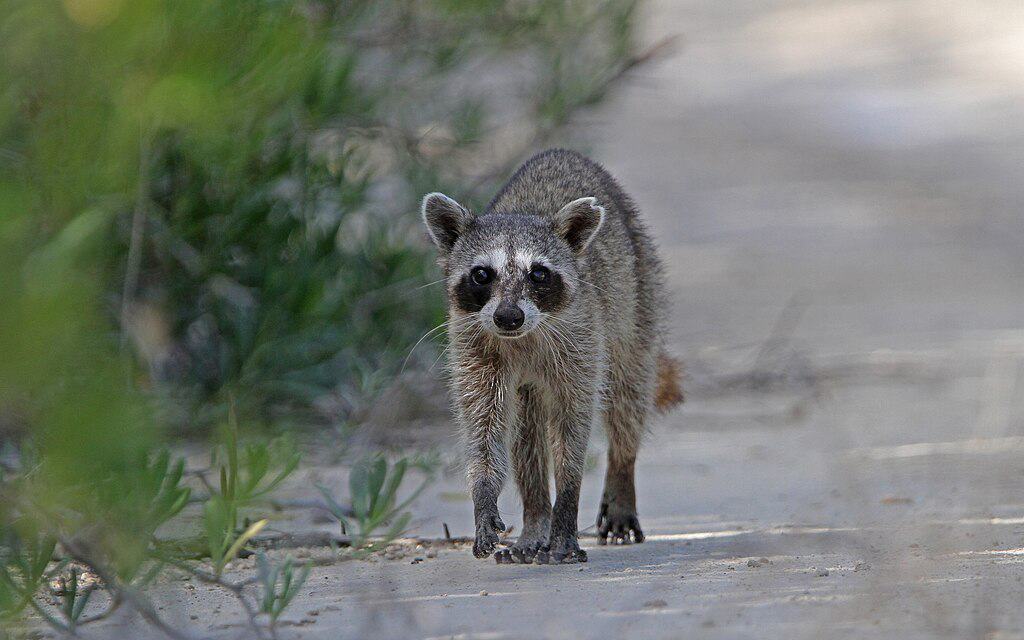
The primary threat to these adorable animals stems from the development of Cozumel Island. As human activities expand and encroach upon their natural habitat, the Pygmy raccoon’s population suffers. Furthermore, recent research has revealed that parasites and diseases also contribute to the reduction of their population.
Preserving the Pygmy raccoon’s habitat and addressing the threats they face is crucial for their survival. Striking a balance between development and conservation, implementing measures to prevent the spread of diseases and parasites, and promoting responsible tourism are essential steps to protect these adorable creatures.
By recognizing the significance of their role in the ecosystem and taking proactive conservation actions, we can hope to reverse the decline of the Pygmy raccoon and safeguard their place in the natural beauty of Cozumel Island.
#11 Mexican prairie dog (Cynomys mexicanus)

The Mexican prairie dog, a small rodent, calls the northern regions of San Luis Potosí and southern Coahuila in Mexico its home. These industrious creatures prefer living in open plains with soil free from rocks.
Reasons for Decline

Tragically, the Mexican prairie dog has become an endangered species due to various factors. Historically, they were used by people to control agricultural pests, leading to their exploitation. Additionally, hurricanes and predation by dogs and feral cats pose significant threats to their survival.
Currently, the population of mature Mexican prairie dogs stands at a mere 250 individuals worldwide. The decline in their numbers is alarming and warrants immediate attention for their conservation.
Mexican prairie dogs play a vital role in the ecosystem. They create an intricate system of burrows and tunnels, which have a profound impact. These tunnels aid in seed dispersal by moving seeds further into the soil, facilitating their growth. Moreover, their burrows contribute to water filtration, enhancing the quality of groundwater.
Protecting the Mexican prairie dog is not only crucial for their own survival but also for maintaining the health and balance of the ecosystem they inhabit. Conservation efforts should focus on preserving their habitats, raising awareness about their importance, and implementing measures to mitigate the threats they face.
By safeguarding the Mexican prairie dog population and appreciating their ecological contributions, we can strive towards a sustainable future where these remarkable rodents continue to thrive and positively influence their surrounding environment.
#12 Baja California Pronghorn (Antilocapra americana peninsularis)

The Peninsular pronghorn, also known as the Baja California pronghorn, is a unique species native to the Baja California region of Mexico.
Unfortunately, recent studies estimate that there are currently only around 200 wild individuals remaining, which places them on the red list of endangered animals. The population decline of the Baja California pronghorn is a matter of great concern.
Reasons for Decline

The survival of these magnificent creatures is threatened by various factors. Cattle ranching, habitat destruction, and poaching pose significant risks to their population. These activities disrupt their natural habitats and reduce the available resources for their survival.
Conservation measures are crucial for the Peninsular pronghorn to increase its population and reclaim its rightful place in the ecosystem. Efforts should focus on protecting their habitats, establishing conservation areas, and implementing measures to combat poaching. Raising awareness about the importance of preserving this species and promoting responsible land management practices are also essential steps in their conservation.
By taking active steps to protect and restore the Baja California pronghorn population, we can help ensure their long-term survival and restore their role as a remarkable part of the ecosystem. Preserving their presence will contribute to the overall biodiversity and ecological balance of the Baja California region.
#13 North American Cougar (Puma concolor couguar)
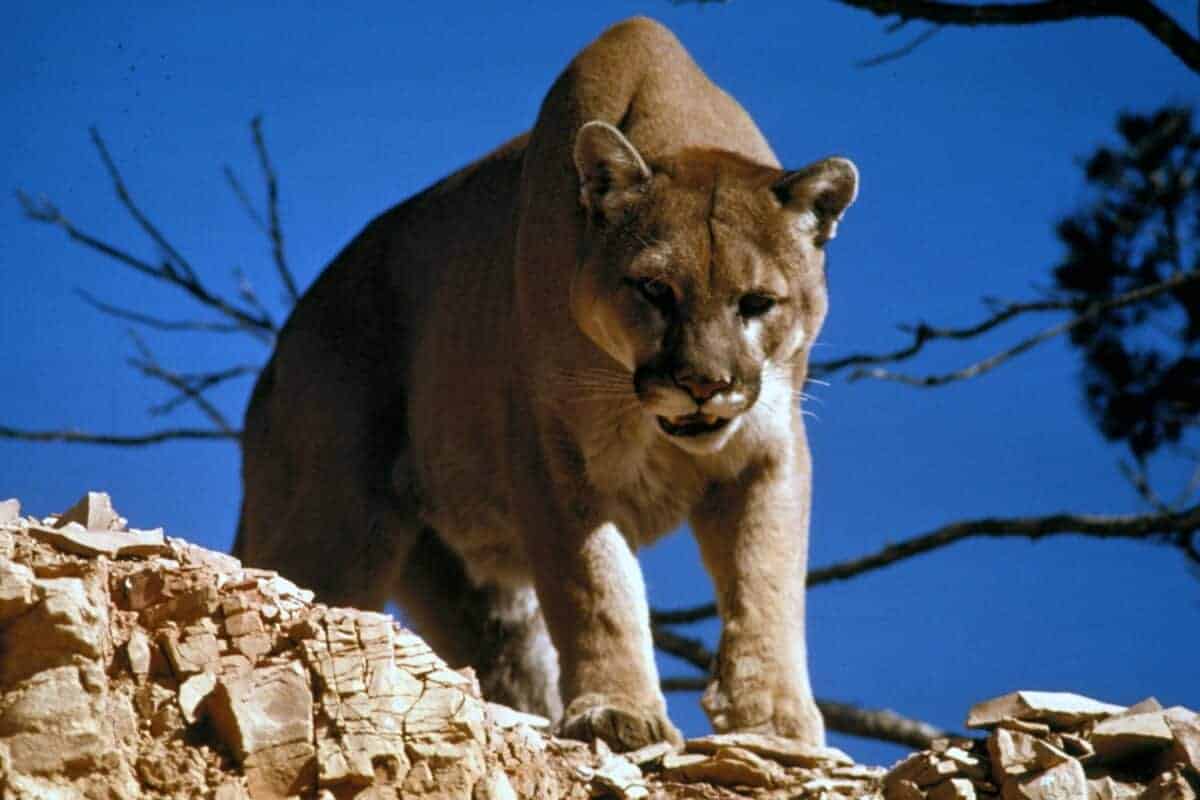
Did you know the largest cat in North America is the North American cougar?
The North American cougar, also known as the mountain lion, has a wide distribution across Southern Florida, the Western United States, and Western Canada.
Reasons for Decline
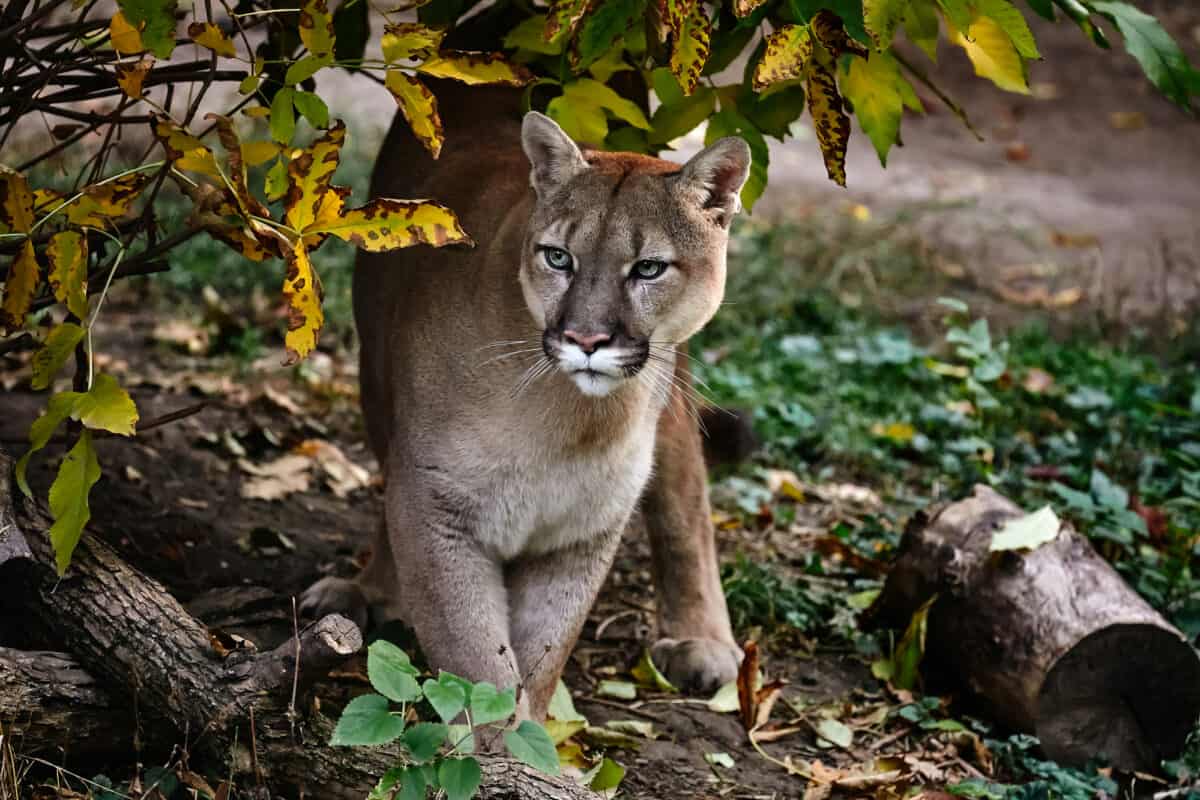
Unfortunately, several factors have contributed to the population reduction of North American cougars. One significant challenge they face is the scarcity of prey, which can lead to competition for resources and a decline in their numbers. Additionally, the loss of their natural territories due to human activities, such as urbanization and habitat fragmentation, further threatens their population.
The increasing human population has had a significant impact on North American cougars. As human settlements expand, these majestic predators face isolation as their habitats become fragmented. This isolation can lead to genetic issues and limit their ability to find suitable mates, further endangering their long-term survival.
Although the North American cougar is not currently on the brink of extinction, it is essential to prioritize the conservation of this species. By taking proactive measures to protect their natural habitats, manage prey populations, and minimize human-wildlife conflicts, we can ensure the long-term viability of the North American cougar population.
Conserving this remarkable species is not only crucial for its survival but also for maintaining the balance and integrity of ecosystems in which they play a vital role. By preserving the North American cougar, we preserve a part of our natural heritage and contribute to the overall biodiversity of our planet.
#14 Baffin Island Wolf (Canis lupus manning)

Baffin Island Tundra Wolf, or Baffin Island wolf, lives on Baffin Island and a few nearby islands. It is small in comparison to other wolves and has a light-colored coat, almost appearing white.
Reasons for Decline

The Baffin Island wolf, found in North America, is currently listed as an endangered species. However, the precise threats that have led to the reduction in their population remain largely unknown. To ensure their survival, it is imperative that further in-depth research is conducted to shed light on the factors contributing to their decline. By delving deeper into their habitat, behavior, and the challenges they face, scientists and conservationists can develop targeted strategies to protect these remarkable animals from the brink of extinction. In-depth research efforts will play a crucial role in enhancing our understanding of the Baffin Island wolf and informing effective conservation measures that can safeguard their population and ensure their long-term survival in the wild.
#15 Kemp’s Ridley Sea Turtle (Lepidochelys kempii)

Kemp’s Ridley Sea Turtle is famously known as the Atlantic Ridley Sea Turtle. It is the most endangered sea turtle species in the world. It is, however not the rarest sea turtle species, this title belongs to the genus Lepidochelys.
According to conservationists, only 7,000–9,000 nesting females of Kemp’s Ridley Sea Turtle exist worldwide. Which is shocking in itself, but what is more surprising is that it was already listed as endangered in 1970!
Reasons for Decline

The Atlantic Ridley Sea Turtle is becoming endangered due to accidental capturing in fishing gear, consumption, and destruction of hatchlings and eggs by predators such as coyotes, birds, feral pigs, and crabs.
Officials in Mexico and the US are continuously working to protect the Atlantic ridley sea turtle.
#16 Wood Bison (Bison bison athabascae)

The Wood Bison, also known as the Mountain Bison or Wood Buffalo, goes by various names. Unfortunately, this magnificent species has experienced a significant decline in its population due to a range of factors.
Within the Canadian provinces of Manitoba, Alberta, British Columbia, and Yukon, there are currently only approximately 7,000 individuals remaining. In Alaska, the population has decreased from 140 individuals to a mere 92 since 2018.
Reasons for Decline

Habitat loss, hunting, diseases, fragmentation of their habitats, and human intolerance have all contributed to their diminishing numbers.
The Wood Bison holds immense significance to Canadian identity and culture. Its loss would have profound consequences, not only in terms of ecological value but also from an economic standpoint. Preserving this species is of utmost importance to ensure the continued ecological balance and the cultural heritage associated with the Wood Bison in Canada.
Efforts to protect and conserve the Wood Bison population are vital. By addressing the threats they face, implementing effective management strategies, and fostering public awareness and tolerance, we can work towards ensuring a future where these majestic creatures continue to roam and thrive, leaving a lasting impact on the Canadian landscape and the hearts of its people.
#17 Coiban Agouti (Dasyprocta coibae)

The Coiban Agouti is a unique rodent species that can only be found on the island of Coiba, off the Pacific coast of Panama. It bears a strong resemblance to the Central American Agouti.
Reasons for Decline

Unfortunately, the Coiban Agouti is facing a decline in its population, although we don’t have precise numbers. One of the main reasons for its vulnerability is the loss of its natural habitat. Since the species is limited to just one island, its survival is greatly affected by any changes or threats to that specific environment.
Coiba Island, where the Coiban Agouti resides, is protected as part of a national park, but it is still at risk. The island is exposed to potential dangers like hurricanes and the impacts of climate change, including rising sea levels. These factors contribute to the species being classified as endangered.
One of the challenges in conserving the Coiban Agouti is the lack of knowledge about its ecology and habitat. Further research and understanding of its requirements are crucial for implementing effective conservation measures. By protecting its habitat and addressing the threats it faces, we can work towards ensuring the survival of this unique and endangered species.
#18 Red Wolf (Canis rufus)
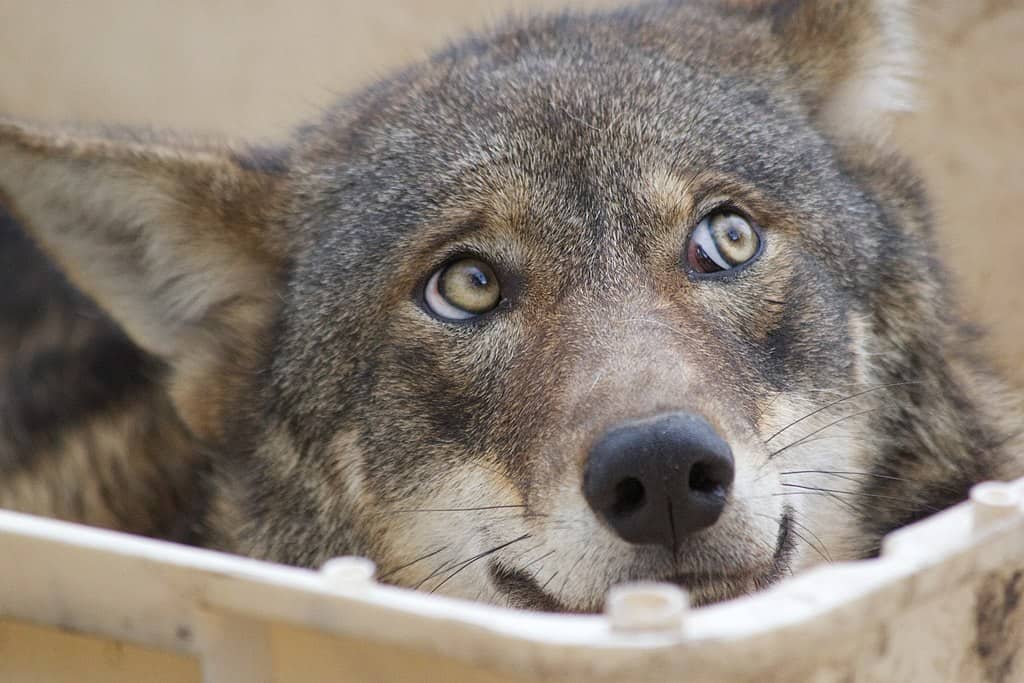
The red wolf, a canine species known as Canis rufus, is native to the southeastern United States. What makes this species unique is its adaptability to various habitats, as it is considered a habitat generalist.
Reasons for Decline
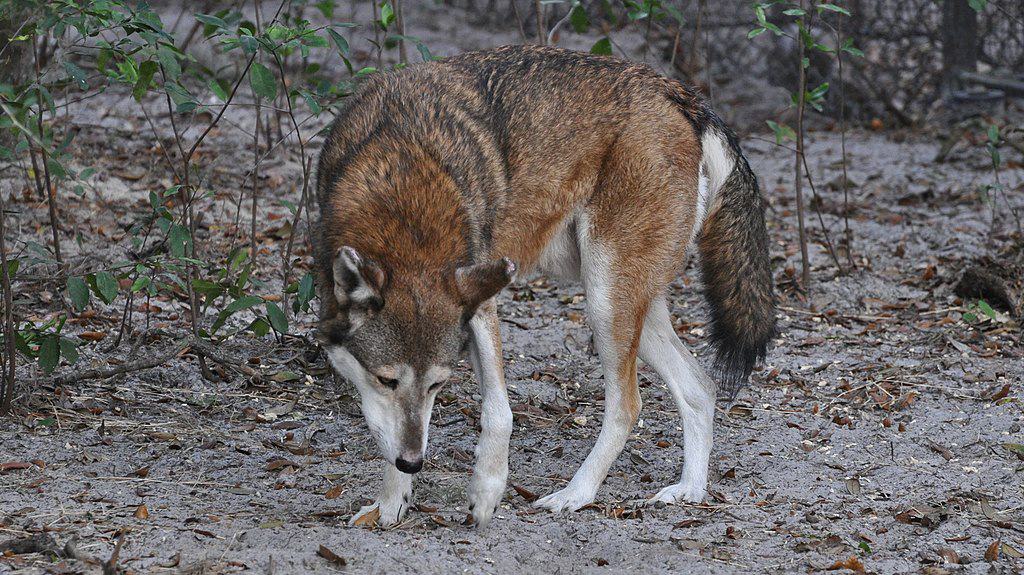
Unfortunately, red wolves face a high risk of extinction. One of the main factors contributing to this threat is hybridization with coyotes, which leads to genetic dilution and the loss of distinct red wolf characteristics. Additionally, illegal killing and mismanagement further endanger their population.
In 2006, the population of red wolves was estimated to be only 130 individuals. Prior to 2006, their numbers were even lower, with fewer than 70 red wolves known to exist. This critically low population size highlights the urgent need for conservation efforts.
Red wolves play a vital role in maintaining a balanced ecosystem by regulating prey populations. Their presence helps control the numbers of certain species, contributing to the overall health of the ecosystem.
Thankfully, there is some positive news. The reintroduction program for red wolves has shown encouraging results. The efforts to reintroduce and protect these wolves have led to an increase in their population compared to previous years. This upward trend offers hope for the long-term survival and recovery of the red wolf species.
Continued conservation efforts, including habitat protection, managing hybridization risks, and addressing illegal activities, are crucial to ensure the red wolf’s future. Preserving this iconic species not only benefits the red wolf itself but also helps maintain a healthy and diverse southeastern U.S. ecosystem.
#19 Coiba Island Howler (Alouatta coibensis)

The Coiba Island Howler, a type of New World monkey belonging to the howler monkey family, is native to Panama. Unfortunately, the population of this species is critically low, with approximately only 472 individuals remaining in the wild. As a result, the Coiba Island Howler is considered one of the most endangered animals in North America.
Reasons for Decline

Given its precarious status, it is essential to conduct more studies on the Coiba Island Howler. These studies would provide crucial information about the monkey’s behavior, habitat requirements, and the specific threats it faces. By generating comprehensive knowledge about the species, conservationists can develop effective plans and strategies to protect it from extinction.
Proper planning is vital because it allows conservation efforts to be targeted and tailored to the specific needs of the Coiba Island Howler. Protecting this unique primate species requires a deep understanding of its ecological niche, the factors affecting its population decline, and potential conservation measures that can be implemented.
By conducting further research and gathering data, scientists and conservationists can make informed decisions and take necessary actions to safeguard the Coiba Island Howler. Collaboration among researchers, wildlife organizations, and local communities is crucial to ensure the long-term survival of this critically endangered species.
#20 Vancouver Island Marmot (Marmota vancouverensis)

The Vancouver Island Marmot is a species of marmot that inhabits the high mountains of Vancouver Island, off the coast of British Columbia, Canada.
In 2003, the population of Vancouver Island Marmots was alarmingly low, with only about 30 individuals remaining in the wild. However, thanks to dedicated recovery programs, their numbers have shown a significant increase. By 2015, the population had grown to an estimated 250–300 individuals.
Reasons for Decline

Numerous efforts are underway to restore self-sustaining wild populations and prevent the extinction of this unique marmot species. These initiatives involve a combination of conservation measures, including habitat restoration, predator management, captive breeding programs, and reintroduction of marmots into suitable habitats.
Vancouver Island Marmots can be found both in the wild and in various captive breeding centers. The captive breeding programs play a vital role in bolstering the population and providing a safety net for the species.
The primary threat to the Vancouver Island Marmot comes from predation, particularly by golden eagles, gray wolves, and cougars. These predators can significantly impact marmot populations, especially when their numbers are already low. Additionally, climate change poses specific challenges, such as changes in snowpack and vegetation patterns, which can impact the marmots’ habitat and food availability.
The presence of Vancouver Island Marmots in the wild is crucial for the grasslands ecosystem. As herbivores, they play an essential role in maintaining the balance of the ecosystem by controlling vegetation growth through their grazing activities. Their presence helps preserve the biodiversity and functioning of the grasslands.
Preserving and protecting the Vancouver Island Marmot is not only important for the survival of this species but also for the overall health and diversity of the unique Vancouver Island ecosystem. Ongoing conservation efforts and continued research are essential to ensure the long-term survival of this remarkable marmot species.
#21 Hispaniolan Hutia (Plagiodontia medium)

The Hispaniolan Hutia is a small, rat-like mammal that is native to the Caribbean island of Hispaniola, which includes the countries of Haiti and the Dominican Republic. This species is primarily active at night and can be found in various habitats, including trees and caves, in both moist and dry forests on the island.
Reasons for Decline

Unfortunately, the Hispaniolan Hutia is classified as an endangered species. It faces several significant threats, including hunting, habitat loss, invasive species, habitat destruction, and its direct use as a crop pest. These factors contribute to the decline in its population and put the species at risk of extinction.
While the exact number of remaining Hispaniolan Hutias is not known, what makes this species particularly valuable for global mammal conservation is its evolutionary distinctiveness. Each species has its unique genetic makeup and ecological role, and the preservation of such distinct species is crucial for maintaining biodiversity and ecosystem health worldwide.
Final Words
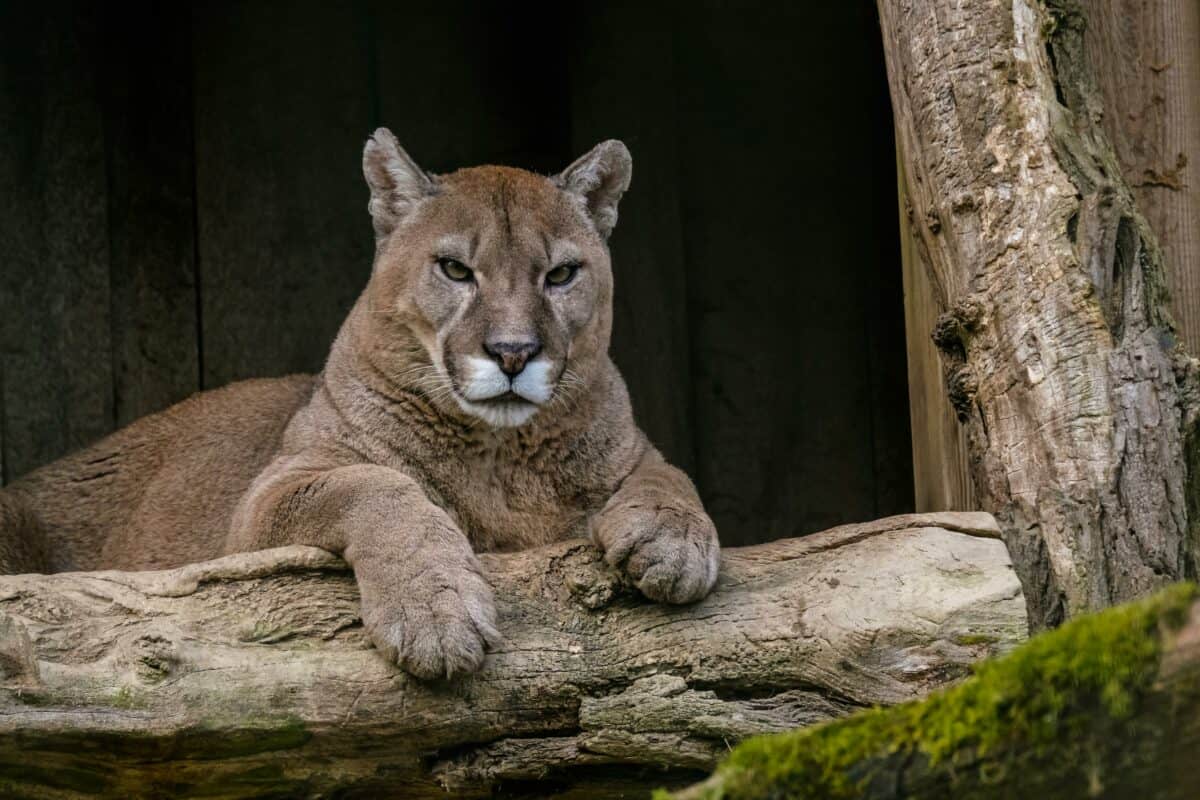
It’s heartbreaking to see the number of endangered animals in North America on the rise. Despite our vast and diverse wildlife, many species are teetering on the brink of extinction, with thousands classified as endangered. It’s high time we take action and prioritize the care and protection of these vulnerable creatures.
By raising awareness, supporting conservation organizations, and demanding stronger protections, we can make a difference. It’s up to us to advocate for more sustainable practices, preserve critical habitats, and take proactive measures to mitigate the effects of climate change.
Every single species matters. Each one plays a unique role in its ecosystem, and losing even one can have cascading effects on the delicate balance of nature. We owe it to these remarkable creatures to fight for their survival and ensure a future where they can thrive.
Thank you for the reading this article! To expand your knowledge on endangered animals even further head over to read our article about the Most Endangered Animals in Africa.
Join our Forum for free today!

